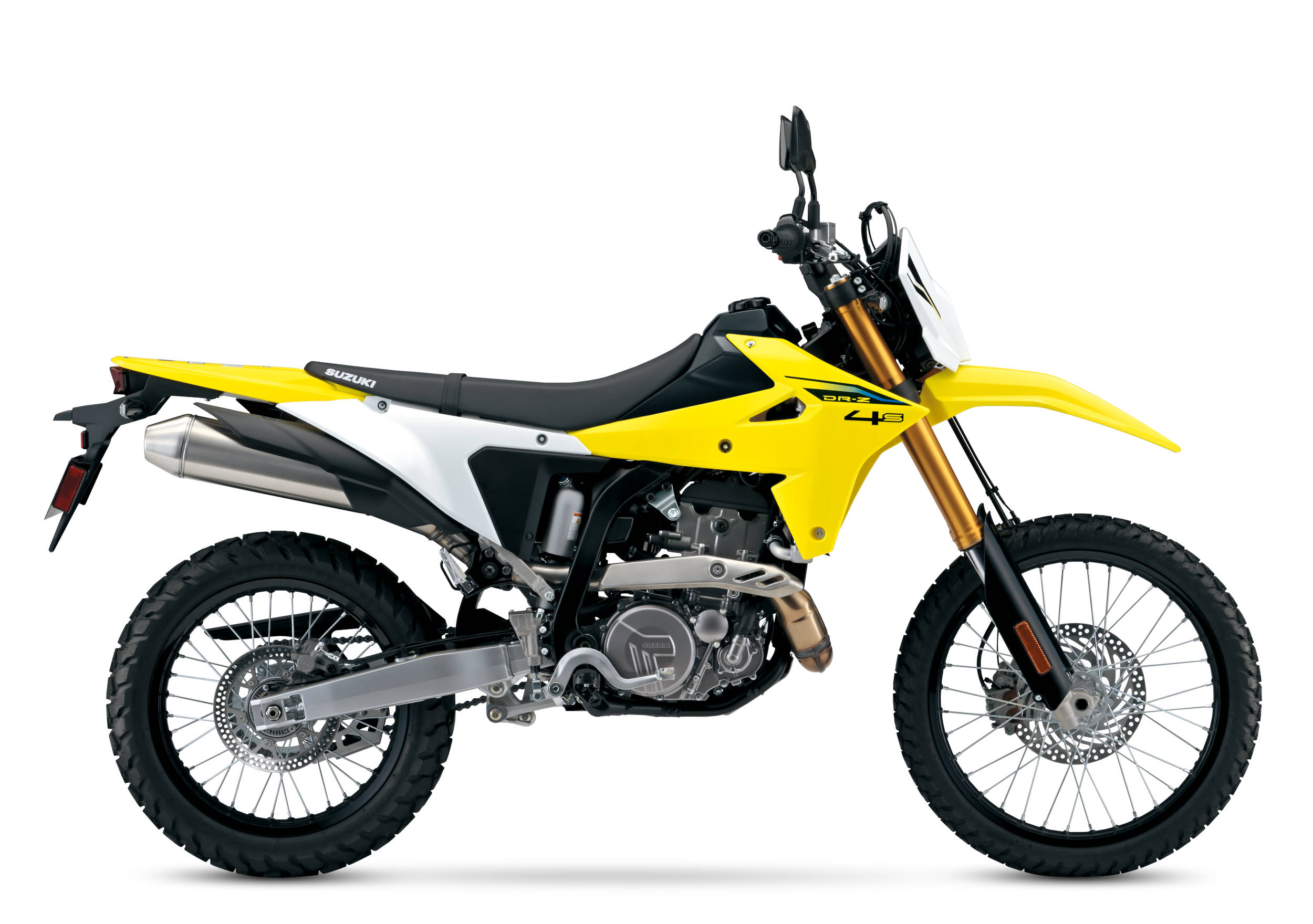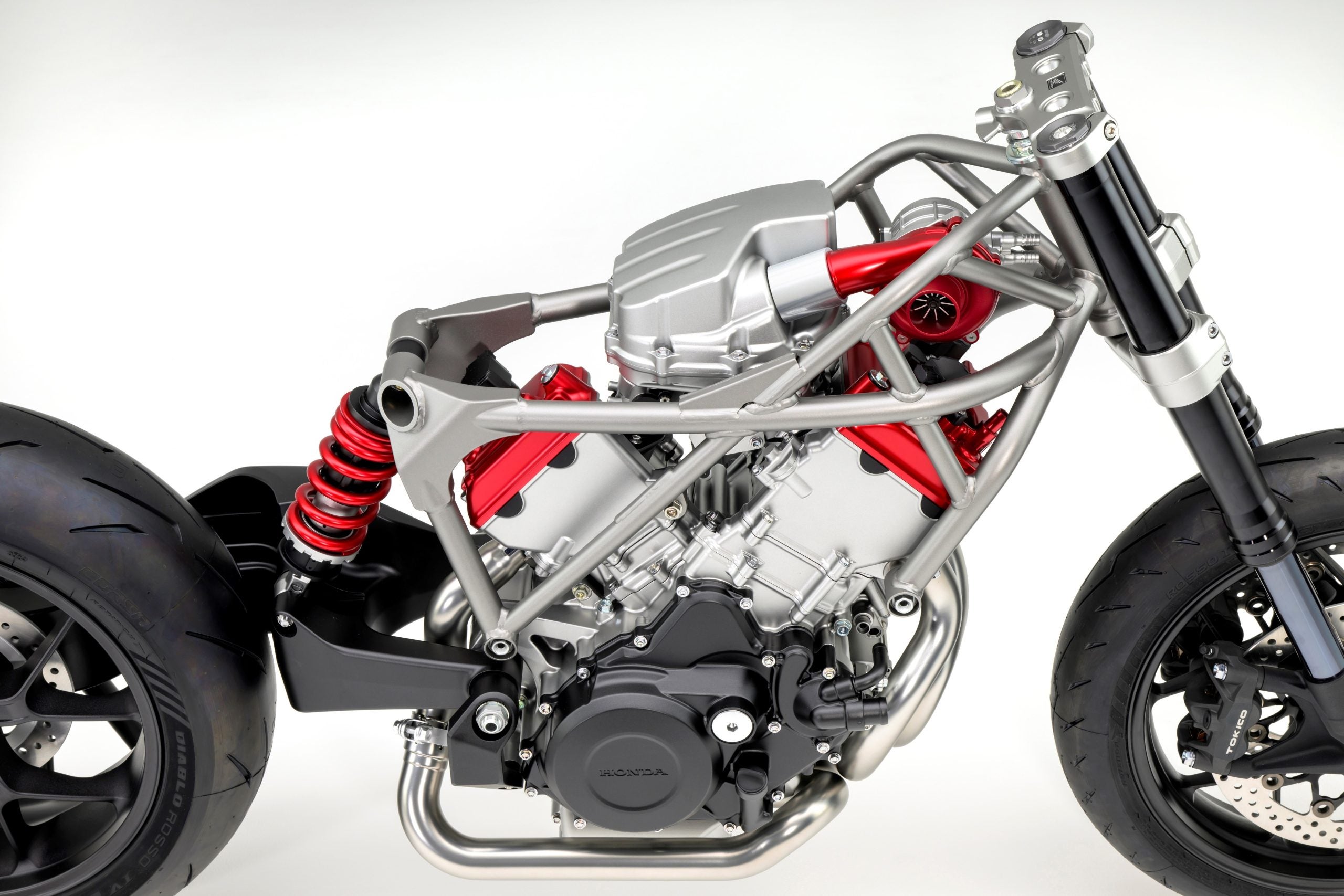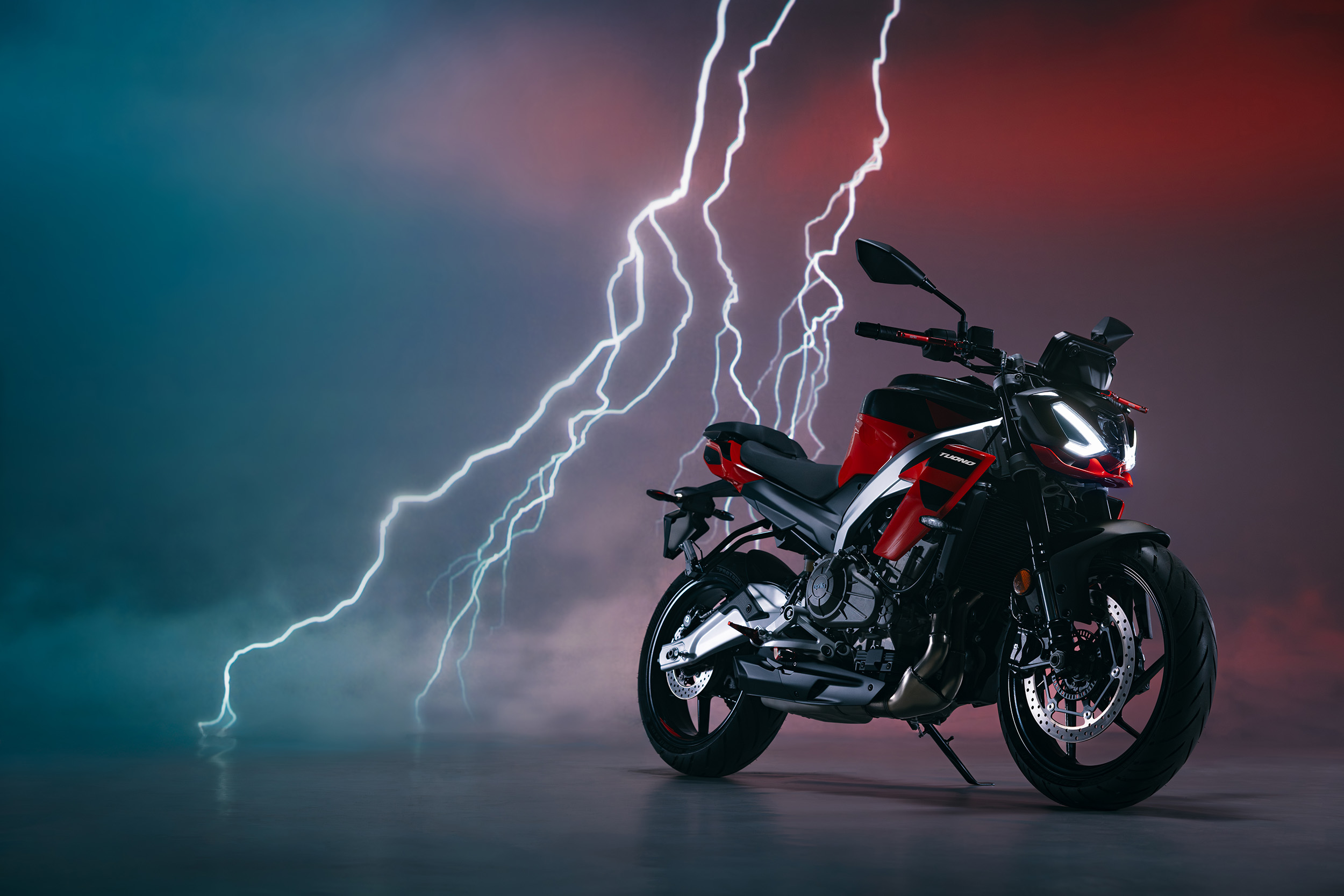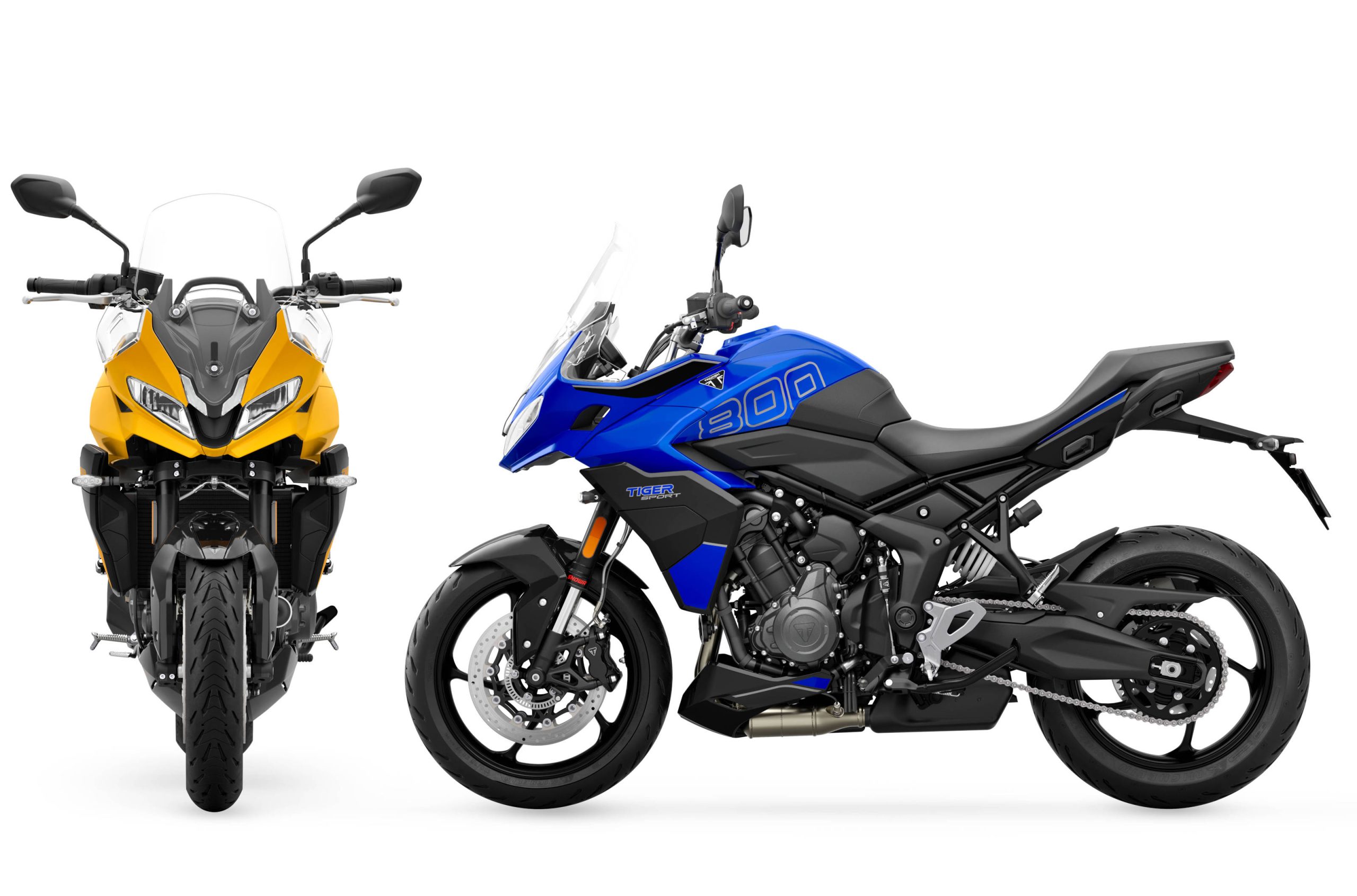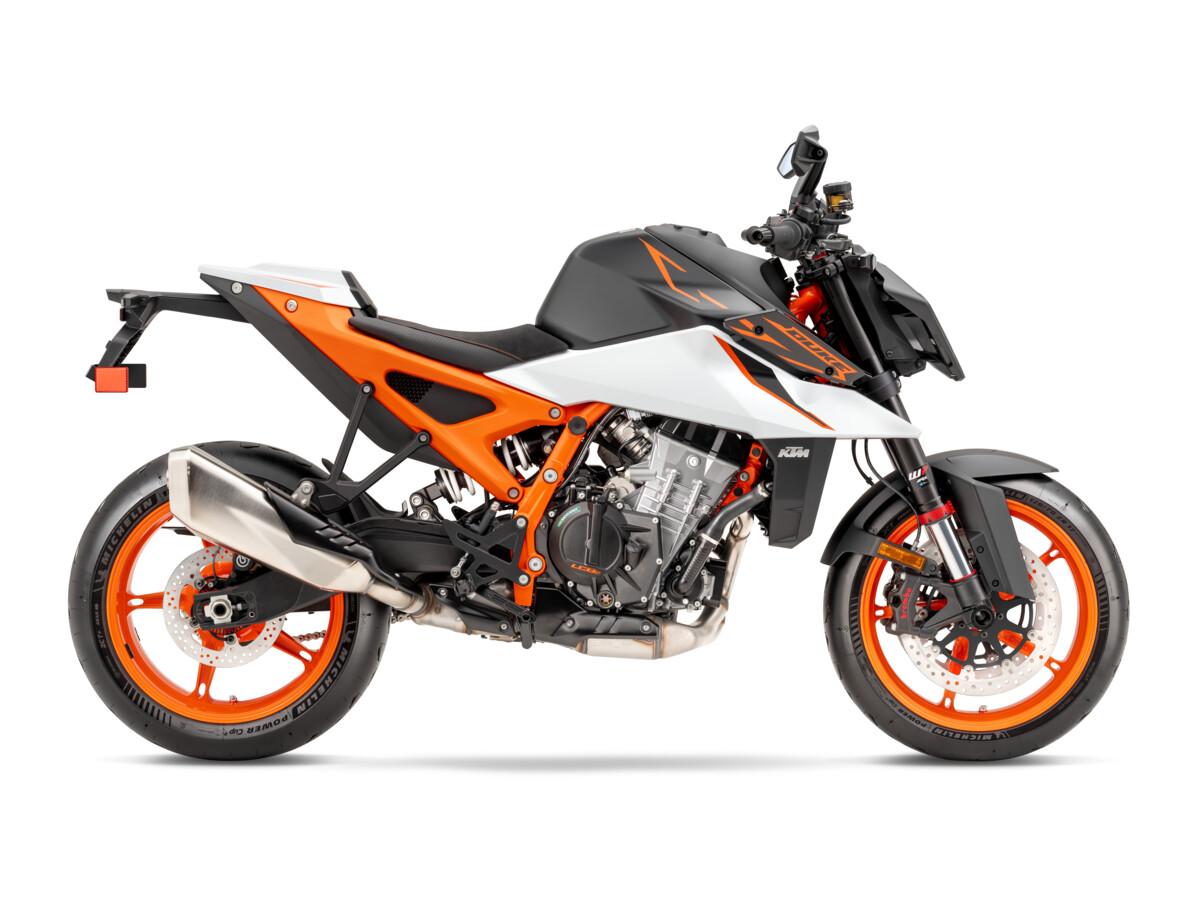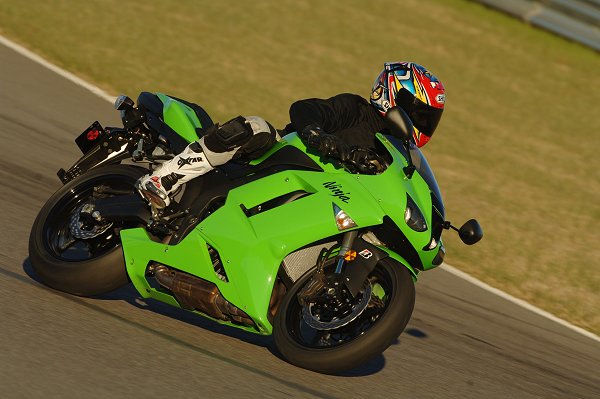
If you read Part One of my First Ride on the 2007 Kawasaki ZX-6R, you know that I spent two days freezing my ass off at Barber Motorsports Park in Birmingham, Alabama to get a first impression of Kawasaki’s new middleweight. In Part One I covered the new ZX-6R’s relationship to its predecessor, as well as some basic technical info and a quick first impression. In Part Two I’ll go more in-depth on the technical changes to the bike, and then give a more thorough account of the first impressions I picked up at Barber.
From the time Kawasaki first revealed the ’07 ZX-6R to the world, the company’s publicity has focused heavily on the bike’s track-ready format. With a goal of building ‘the Ultimate Track Bike’, Kawasaki set out to design a 600 that corners like a 250cc GP bike while packing the power of a tuned 600cc Supersport racer.
The all-new engine is the first time in ten years that Kawasaki has completely redesigned their middleweight four-cylinder – according to the company, all their other 600s in the last decade have been ‘evolution’ designs. The new engine follows all the usual conventions of redesigning a modern sportbike inline-four for more power: careful design of the cylinder head, intake and exhaust tracts to improve breathing; refinement of the internal components for reduced reciprocating weight, greater strength, and less friction; more efficient cooling passages to keep operating temps lower; and finally, larger crankcase vents reduce pumping losses. The whole target of this engine-development program was to produce not just a more powerful motor, but one with a much broader, more useable powerband – one that would give the ZX-6R ultimate performance firing out of a corner at any speed.
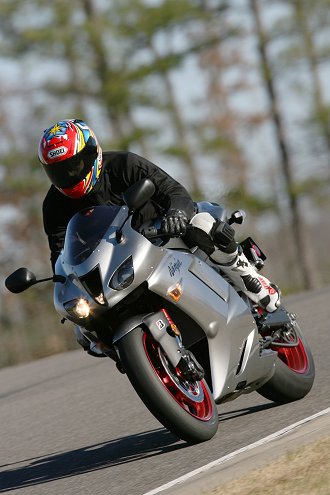
The new 599cc powerplant is also significantly more compact than its predecessor (Kawasaki claims approximately 40mm smaller in both width and length), allowing Kawasaki’s engineers to more precisely place the engine in a location that enhanced their mass centralization goals.
The compact new motor is complemented by a race-ready transmission, featuring cassette-style gears which will make it easy for race teams to change to a different gearset, and an updated version of the back-torque limiting slipper clutch that Kawasaki has included on all its modern sportbikes in the last few years.
The all-new chassis was again designed with ultimate track performance in mind, and while still using aluminum perimeter construction, it shares few other similarities with the chassis of the previous model ZX-6R and -6RR. Following current trends toward what some manufacturers refer to as ‘tuned flex’, the stiffness balance of the new frame has been carefully revised to allow more flex in some directions, while being stiffer in others. This is claimed to result in improved feedback, greater rider control and confidence, and better grip. Claimed dry weight has actually increased by 6lbs to 368lbs (mainly due to the emissions equipment required to meet strict new standards), but due to the effects of the design team’s mass centralization work, the new ZX-6R feels significantly lighter than its predecessor.
On the track, the ZX-6R inspires a high level of rider confidence, due in large part to the excellent front-end feedback coming through the new front forks. This feedback gives the confidence necessary to brake later and harder, turn in more aggressively, and carry more corner speed at the apex. The front forks are adjustable for rebound, compression, and preload, although small changes didn’t seem to make much of a difference in their performance. Part of this can be put down to the extremely cold temperatures (in the 20s) when we rode the ZX-6R at Barber – the cold changes the viscosity of the fork oil, making damping less effective.
Even with the cold suspension fluid, however, I was impressed with the front end’s performance, and I could say the same about the rear. I received excellent feedback through my butt and feet, again giving me confidence that the rear wheel had plenty of grip left. After slightly softening the compression damping at the rear, the ZX-6R would squat just the right amount as I got on the throttle coming out of Barber’s tight corners, planting the rear wheel to drive forward without taking so much weight off the front end as to cause the bike to run wide, or lose the front end and lowside.
Despite the efforts put into mass centralization, the ZX-6R isn’t the easiest 600 I’ve ever ridden to flick from side-to-side quickly, although it feels lighter in these transitions than its 636cc predecessor. Initial turn-in from a straightaway, however, was well-balanced – not as razor-sharp as some sportbikes, but quick enough to satisfy without offering any hint of instability.
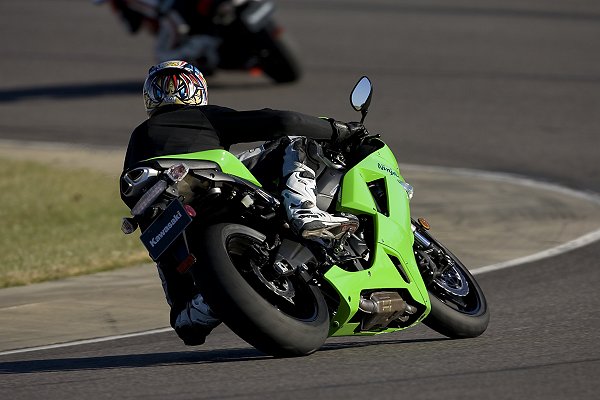
Mid-corner grip was where the ZX-6R really shined, and once the bike was ‘over on its ear’, I always found myself wishing that I had carried more entry speed, the 6R always clearly communicating that it could easily take another 5mph. In Barber’s Turn 2, a long, downhill right-hander, I was carrying more corner speed than I would have believed possible on my first few laps – gaining ground on other riders who were faster than me everywhere else, entering a little bit faster every lap, and always getting the impression that I could have gone even faster. Once I turned in and balanced the 6R on my knee, I was continually rolling the throttle on farther and farther, without ever reaching the point where the bike refused to hold a tight inside line and started to drift wide.
Of course, almost every modern 600 has the capability to carry higher corner speeds than I typically use, a fact ably demonstrated by Kawasaki’s Akira Yanagawa as he passed me in different spots on the track, frequently carrying 20mph+ more corner speed. However, no matter how much grip your rational mind knows is available, you can use only so much as you are comfortable with, and good feedback is the key to inspiring the rider’s confidence. Luckily, feedback is something the ZX-6R has in abundance, as I have already mentioned, and the feeling the bike gives you that there is always more grip available makes me certain that I could pick up a ton of speed if I spent more time getting used to the 6R.
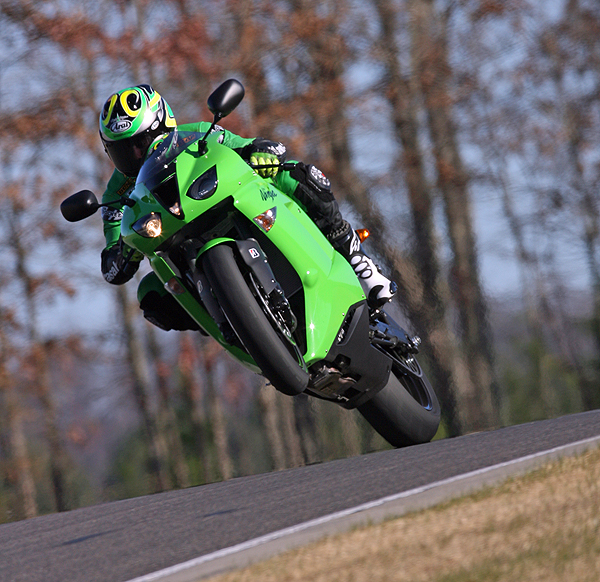 |
|
Factory Rider Roger Hayden also put in some fast laps
|
Front-end confidence is further enhanced by the aggressive riding position, which feels like it puts your shoulders directly in line with the fork tubes. This relationship gives a feeling of precise control during turn-in that contributes to the feeling that the front end is completely under control and has plenty of grip in reserve, The pegs are not too high, and strike a good balance between ground clearance and comfort, although I suspect that if the weather was warmer I would have been able to drag the peg in some corners. Not enough to be a hindrance, though – for any reasonable riding, the 6R has plenty of lean angle available.
Overall stability is excellent, and the lack of a steering damper isn’t something you miss, even on some of Barber’s bumpy corner exits. The only spot on the track where I experienced anything remotely like headshake was coming over a small but sharp crest while full throttle and nearing redline in second gear. Even then, it was only a little wiggle, and nothing to make me nervous or cause me to back out of the throttle. For a powerful, sharp-handling 600, the ZX-6R has excellent front-end stability.
I have to point out that for our track testing, the 6Rs were equipped with Bridgestone BT-002 Pro DOT-legal race tires (medium compound) rather than the Bridgestone street tires that will come as original equipment from the dealer. The Bridgestones provided awesome grip even in the frigid Alabama temperatures, and certainly played a large part in the 6R’s huge mid-corner grip at this track test. The OE street tires will certainly have lower limits, although how much is difficult to say. However, because the BT-002 Pros are designed to have similar profile and feel to their street-going siblings, the 6R’s handling characteristics should remain relatively unchanged on street tires, save for less ultimate grip.
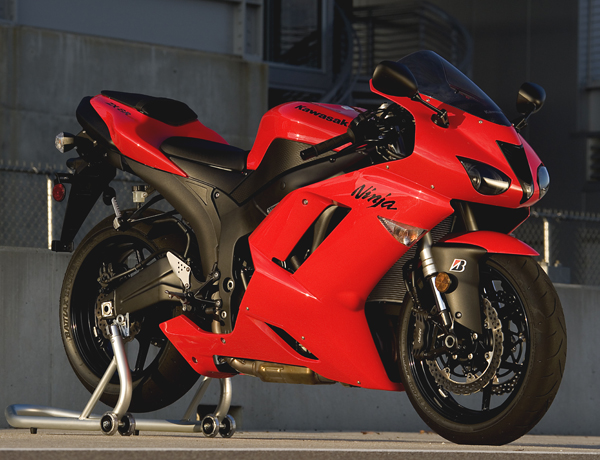
The new radial-mounted four-piston Nissin front calipers combined with Kawasaki’s signature wavy discs offer excellent stopping power, and the radial-pump master cylinder offers the improved feedback that seems to be characteristic of that design (as compared to traditional master cylinders). When combined with the excellent front end and the low center of gravity which reduces weight transfer under braking, I continually pushed forward my braking points every session, and was never concerned that I was going to blow a corner or that I was coming in too hot and wouldn’t be able to scrub enough speed.
Further assistance came from the latest generation of Kawasaki’s slipper-clutch system, which I’ve praised on both the previous ZX-6R and its big brother, the ZX-10R. As usual, Kawasaki’s slipper clutch is flawless and transparent in operation, reducing back-torque reaction during downshifts while applying just enough of said reaction to the rear-wheel to help slow the bike down and keep the chassis planted on corner entry. Combined with the lofty redline, this often allows you to bang two downshifts instantly as soon as you pass your brake marker, and use the engine braking effect to help slow you down without fear of locking the rear wheel, or even experiencing juddering/instability.
But what happens when you turn the throttle the other way? The operative word when describing the new, ultra-compact ZX-6R powerplant is smooth. Power delivery builds in a linear and seamless fashion toward its 12,500rpm peak, although strangely enough Kawasaki’s press materials claim a 14,000rpm power peak for the European model. The smoothness of the new motor is quite a change from the punchy torque of the old 636cc mill, and can seem deceptively unimpressive at first. After a while, though, you realize that the 6R is actually accelerating quite rapidly, and you are only being tricked by the lack of an abrupt ‘snap’ of forward drive.
While the 6R’s ultimate acceleration will never be perceived as re-defining the 600 class, what impresses as much as the smooth delivery is the breadth of the powerband. While on the track I rarely dropped below 8,000rpm, but from that point upward the 6R accelerates smoothly towards the 12,500rpm peak, and power doesn’t trail off much until you reach 15k rpm. The last 1500rpm before the 16,500rpm redline is mostly there for over-rev capability, and short-shifting around 14k-15krpm seems to be the best and easiest way to progress around the track. In this, Kawasaki has succeeded in their stated goal of offering a wide, flexible powerband well-suited to making rapid progress around a racetrack – there were a few corners I probably should have taken in first, exiting at around 12krpm and upshifting almost immediately, but I didn’t seem to lose much time by taking the corner in second and coming out at around 8k rpm instead, allowing me to wait until the bike was fully upright before making an upshift.
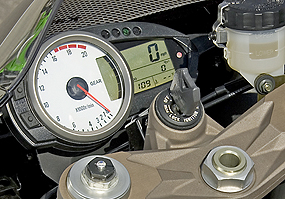
The new gauge cluster is dominated by the huge, highly visible white-faced tachometer, with a red needle that is easy to spot with a quick glance downward as the bike spins toward redline. The gear position indicator on the right side of the tach face is also a nice touch, and something that we’d like to see all manufacturers include on their sportbikes.
The updated styling is rounded and somewhat bulbous, the smaller headlights making the upper fairing look bigger than it really is. The whole bike lacks much of the slim, sharp-edged aggressiveness that seems to be coming to define the modern sportbike, and so it appears larger than its competitors although in reality it is smaller than many of them. As usual, beauty is in the eye of the beholder, and I will leave judgement on the 6R’s appearance to each individual prospective buyer.

Since Kawasaki announced their plan to replace their 636cc middleweight, long touted as one of the best street bikes in its class, with a much more track-focused, high-revving 600cc successor, there has been much anticipation as to how the new bike would come out. After finally getting a chance to ride a 2007 ZX-6R, I found that Kawasaki has designed an excellent track bike, one with impressive handling and braking capabilities, backed up by a smooth, flexible motor. The wide powerband makes it easy for less-experienced riders to hustle the Kawasaki around the track, and the chassis gives the rider plenty of confidence in his mount. Now we just have to find out if Kawasaki has traded away streetability to gain this newfound racetrack prowess, and if so, how much. Stay tuned for a full MD Ride Review as soon as Kawasaki makes a test unit available to us.

